Top 8 Most Beautiful Historical Sites in Brazil
In Brazil, there are many great historical sites, museums, and monuments to satisfy your desire for historical excursions. The National Historical Museum, ... read more...which opened in 1922 and houses over 300,000 artifacts from Brazil's past, the ancient ruins at Serra da Capivara National Park, and the 18th century Jesuit chapel at Sao Miguel das Missoes are just a few of them. The most beautiful historical sites in Brazil are given below.
-
Salvador is one of the most beautiful historical sites in Brazil and the capital of the state of Bahia. Salvador, located in the Zona da Mata in Brazil's Northeast, is known across the country and worldwide for its cuisine, music, and architecture. Because of the African influence on many parts of the city's culture, it is known as a center of Afro-Brazilian (negro) culture. As the first capital of Colonial Brazil, the city is one of the oldest in the Americas and one of the first planned cities in the world, having been established during the Renaissance period. It was founded in 1549 by Tomé de Sousa in response to the Portuguese Empire's construction of the General Government of Brazil. Because it is one of Brazil's oldest towns, there will be plenty of historical things to see, such as Pelourinho and the Model Market.
The Historic Center of Salvador, iconized on the outskirts of Pelourinho, is known for its Portuguese colonial architecture, with historical monuments dating from the 17th century to the beginning of the 20th century, and was declared a World Heritage Site by UNESCO in 1985. There are cobblestone alleys opening onto large squares, colorful buildings, and baroque churches such as São Francisco, featuring gilt woodwork. The stage of one of the biggest Carnivals in the world (the biggest street party in the world, according to the Guinness World Records), the integration of the municipality to the UNESCO's Creative Cities Network as the "City of Music", a unique title in the country, added to the international recognition of Salvador's music.
Location: the Zona da Mata in the Northeast Region of Brazil
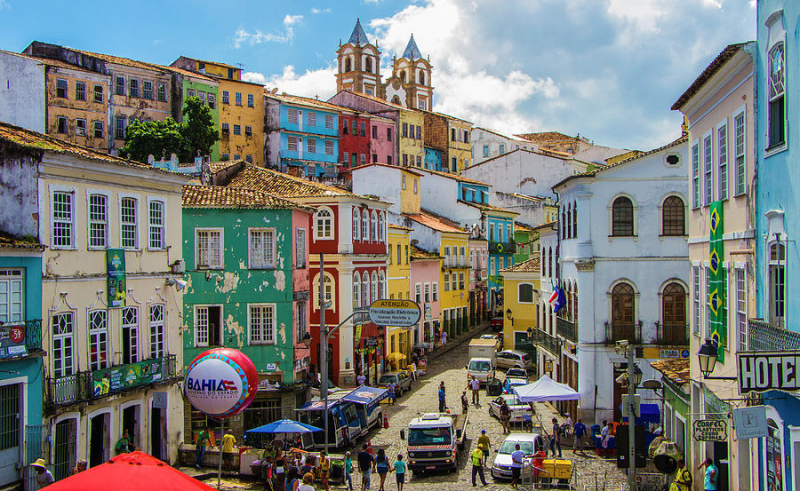
Source: fineartamerica 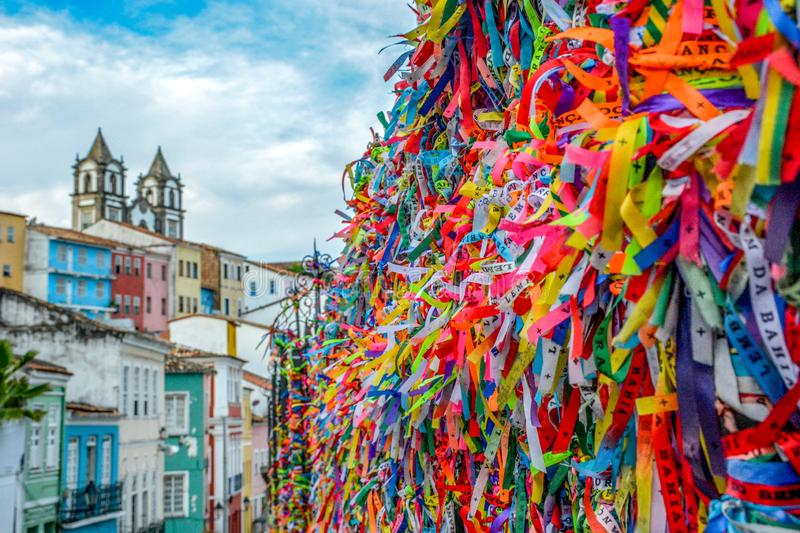
Source: dreamstime -
Olinda is a historic city in the northeastern Brazilian state of Pernambuco. It lies in the Metropolitan Region of Recife, the state capital, on the country's northeastern Atlantic Ocean coast. It has been inhabited since 1535 and is considered one of Brazil's best-preserved colonial cities. Olinda, the former capital of the Captaincy of Pernambuco during the colonial era, includes several historical structures, including the center, which was designated as a UNESCO World Heritage Site in 1982, as well as a vibrant culture. The Carnaval of Olinda, a popular street fiesta, is comparable to conventional Portuguese carnivals, but with African-influenced dances that represent the Northeast's heritage. All of the activities are held on the streets, with no bleachers or ropes, and admittance is free, unlike in other cities. Hundreds of minor musical ensembles exist in a variety of genres.
Olinda declined in importance after the Dutch invasion. Recife became the capital of Pernambuco in 1827, and Olinda is part of the greater Recife metropolitan area. Due to the historic position of the city, its cathedral, a World Heritage Site, called São Salvador do Mundo, remains the primary seat of the Roman Catholic Archdiocese of Olinda and Recife, with a co-cathedral in Recife. Olinda also has a Minor Basilica, again a World Heritage Site. Besides its natural beauty, Olinda is also one of Brazil's main cultural centers: in 1982 it was declared a World Heritage Site by UNESCO. The city relives the magnificence of the past every year during the large Carnival, to the rhythms of frevo, maracatu, and other northeast music and dances.
Location: Pernambuco, Brazil, in the Northeast Region
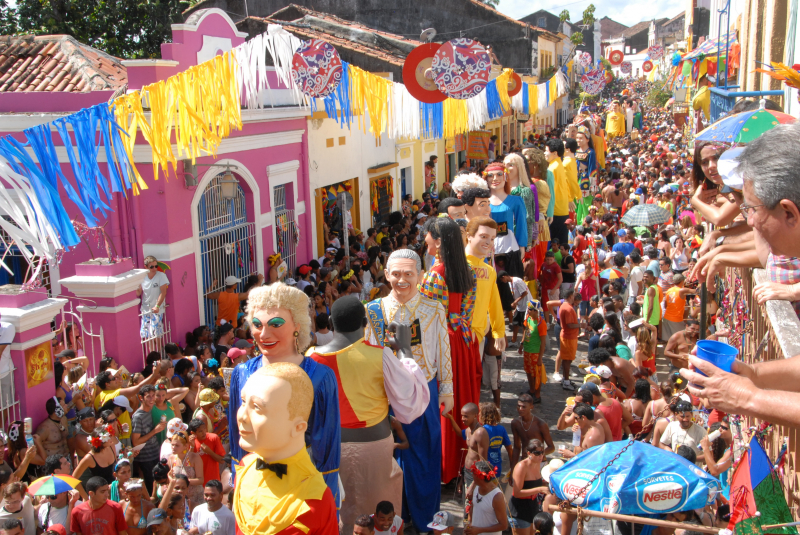
Source: wikimedia -
Paraty is a tiny hamlet on Brazil's Costa Verde, between Rio de Janeiro and So Paulo, surrounded by mountains. It features a laid-back feel and beautiful colonial residences. Because the town relies heavily on tourism, there are events held throughout the year.
All of the gold obtained from the Minas Gerais State would be brought here to be exported, making Paraty the formal end of the Gold Route (or Gold Path). This is because Paraty has a deeper draft (the depth to which a ship can sail) than Rio. This made it possible to load gold onto larger and heavier ships, making the operation more efficient. Paraty developed in the 1700s as a result of its prominence in the gold cycle, as well as the sugar cane cycle, which allowed it to become one of the most important manufacturers of Cachaça.
The Festival da Cachaça, which sells various kinds of sugar cane fermented liquor, which is the key ingredient in the famous caipirinha, and FLIP, the International Literary Festival, which brings numerous prominent writers and publishers from all over the globe, are two of the most well-known events. There are also culinary, music, and art festivals, some of which last only a weekend and others that span a few weeks. It's worth visiting for a few days to take in the sights of the town, the beautiful beaches and woodlands, and the festivals.
Location: Brazil's Costa Verde, between Rio de Janeiro and São Paulo
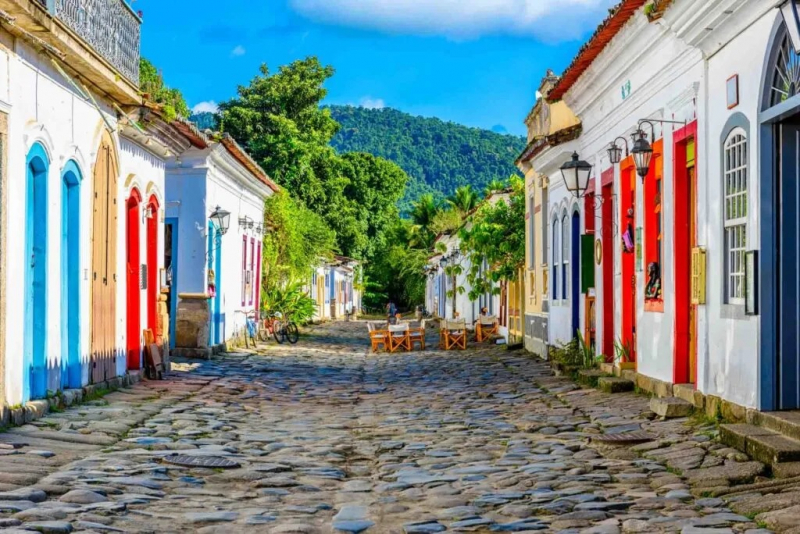
Source: iheartbrazil -
Sao Miguel das Missoes is a municipality in the Brazilian state of Rio Grande do Sul. The municipality is home to important 17th-century Spanish Jesuit mission ruins. San Miguel Mission is located in the Riograndense Northwest Mesoregion and the Santo Angelo Microregion. The community was built up on Mission San Miguel Arcángel, a Spanish colonial Jesuit Reduction founded in 1632. It was renamed Mission Sao Miguel das Missoes after becoming part of Brazil. In 1984, UNESCO designated Mission So Miguel das Misses as one of four Jesuit reduction sites in Argentina and one in Brazil as Jesuit Missions of the Guaranis World Heritage Sites.
The Mission Museum (Museu das Misses) in So Miguel Mission is a historical museum. The museum was one of the initial projects of the Office of Historical and Artistic Heritage, which is now known as IPHAN. The SPHAN was founded in 1937, and the same year, the architect Lucio Costa was dispatched to the Rio Grande do Sul to assess the ruins of the Seven Peoples of the Missions and provide recommendations. One of his ideas was to build a museum to house the missionaries' monuments that were scattered across the region. The vestiges of the village of San Miguel, as well as the museum structure, were designated as National Heritage in 1938, and the Museum of the Missions was formed in 1940.
Between 1938 and 1940, the architect Lucas Mayerhofer was in charge of stabilizing the mission Church of San Miguel, as well as the creation of the museum building and the collection of statues. Religious pictures from the time of the Jesuit missions' installation in the region are currently listed in the museum's collection.
Location: the Rio Grande do Sul state, southern Brazil
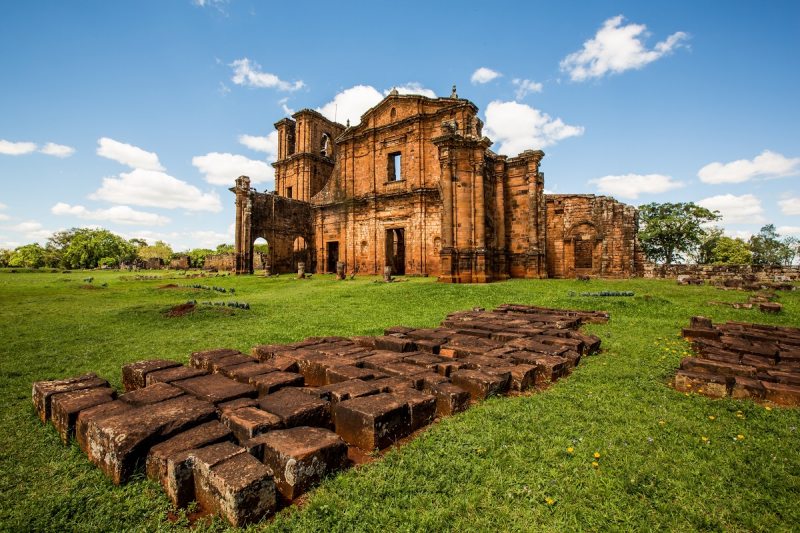
Source: artsandculture -
Ouro Preto, formerly Vila Rica, is a city in the state of Minas Gerais, Brazil, and the former capital of the state. It is one of the most beautiful historical sites in Brazil. It is a former colonial mining town located in the Serra do Espinhaço mountains that have been designated a UNESCO World Heritage Site for its outstanding Baroque Portuguese colonial architecture.
One of the most important places of the Brazilian Gold Rush is Ouro Preto. In the eighteenth century, 800 tons of gold were officially shipped to Portugal, without including what was traded illegally or what stayed in the colony, such as gold employed in church adornment. The municipality grew to be Latin America's most populated, with some 40 thousand residents in 1730 and 80 thousand a few decades later. New York had a population of less than half that of So Paulo at the time, and neither city had a population of more than 8,000 people.
Another place well-known among Brazilians but relatively obscure among outsiders is this one. This adjacent town, Mariana's older sibling, is known for its baroque churches and colonial residences. It is a wonderful site to see gold mines, cathedrals plated in gold, colonial museums, and eat amazing regional food. It is also a university town, so there will be vibrant nightlife during school periods.
Location: the Serra do Espinhaço mountains of eastern Brazil
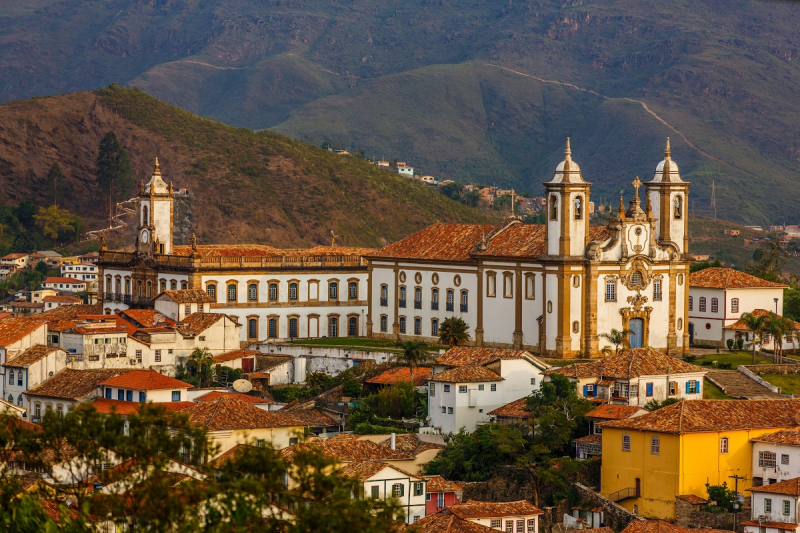
Source: artsandculture -
It was utilized as the Royal Family's summer vacation since it is located up the hills from Rio, making it much cooler than the then metropolis during the hotter months. Because Petropolis is located in the heart of the Atlantic Forest, the roads there provide some of the most beautiful views of the valley's green sea of trees. You may simply make a day trip or spend a couple of days in Rio de Janeiro because of its proximity.
There are some of the main attractions in Petropolis. The first is The Imperial Palace, which has most of the original furnishings in the same condition as when the family left it, including the floor, which requires cloth slippers to avoid scratching. Princess Isabel was awarded the Crystal Palace for her 15th birthday in 1884, to use as her personal greenhouse. Since then, it has held parties and conferences, and it is now one of Petropolis' tourist attractions. Bavaria Brewery is another option. If you enjoy beer, you may visit the Bavaria brewery and museum, which produces one of Brazil's most recognized beers. Finally, the Quitandinha Hotel, which was established in 1944 to be South America's largest casino, is now utilized for weddings, conferences, and as a honeymoon hotel.Location: the state of Rio de Janeiro in the Southeast Region of Brazil
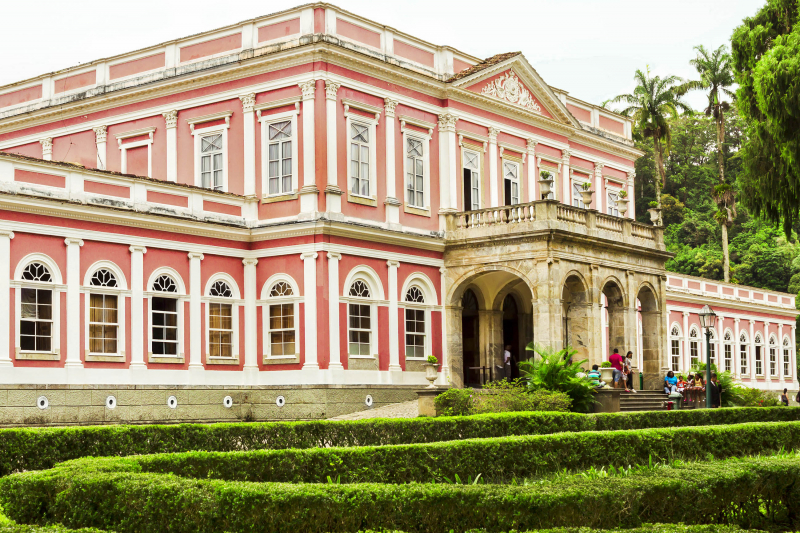
Source: franks-travelbox.com 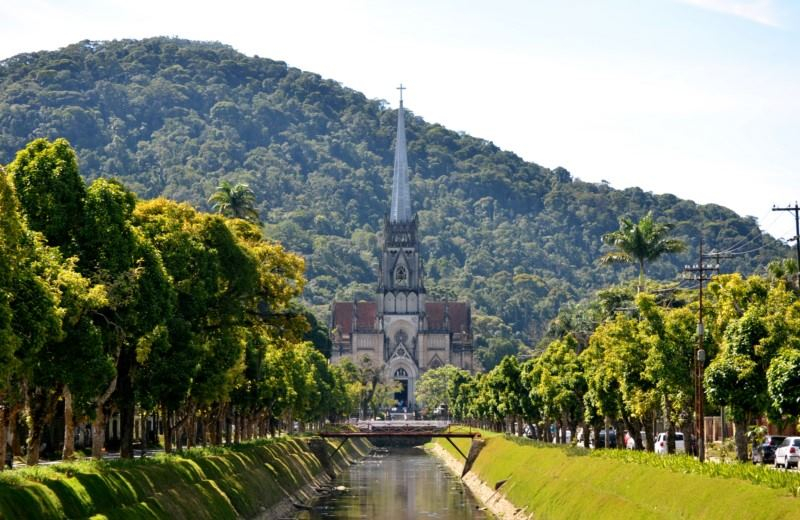
Source: brol.com -
Christ the Redeemer (Cristo Redentor) is a 30-meter-high statue atop an 8-meter pedestal, with the 700-meter-high Corcovado mountain in the background. It was built of soapstone and reinforced concrete between 1922 and 1931. It is now a Brazilian cultural icon as well as a global Christian emblem. French artist Paul Landowski and Brazilian engineer Heitor da Silva Costa collaborated with French engineer Albert Caquot to build Christ the Redeemer. It has a mass of 635 metric tons. Gheorghe Leonida, a Romanian sculptor residing in Paris who was engaged by Landowski, produced the face of the Christ the Redeemer monument.
The Archbishop of Rio dedicated a chapel beneath the statue on the 75th anniversary of its creation in October 2006. Lightning struck the monument in 2008 and 2014, inflicting damage, and it has also been the subject of recent rehabilitation attempts. In Brazil and around the world, the monument is regarded as a cultural landmark. Because it is a popular tourist location, there are typically enormous crowds. On a clear day, the viewpoint atop Corcovado offers a spectacular view of Rio de Janeiro.
Location: at the peak of the 700-meter Corcovado mountain
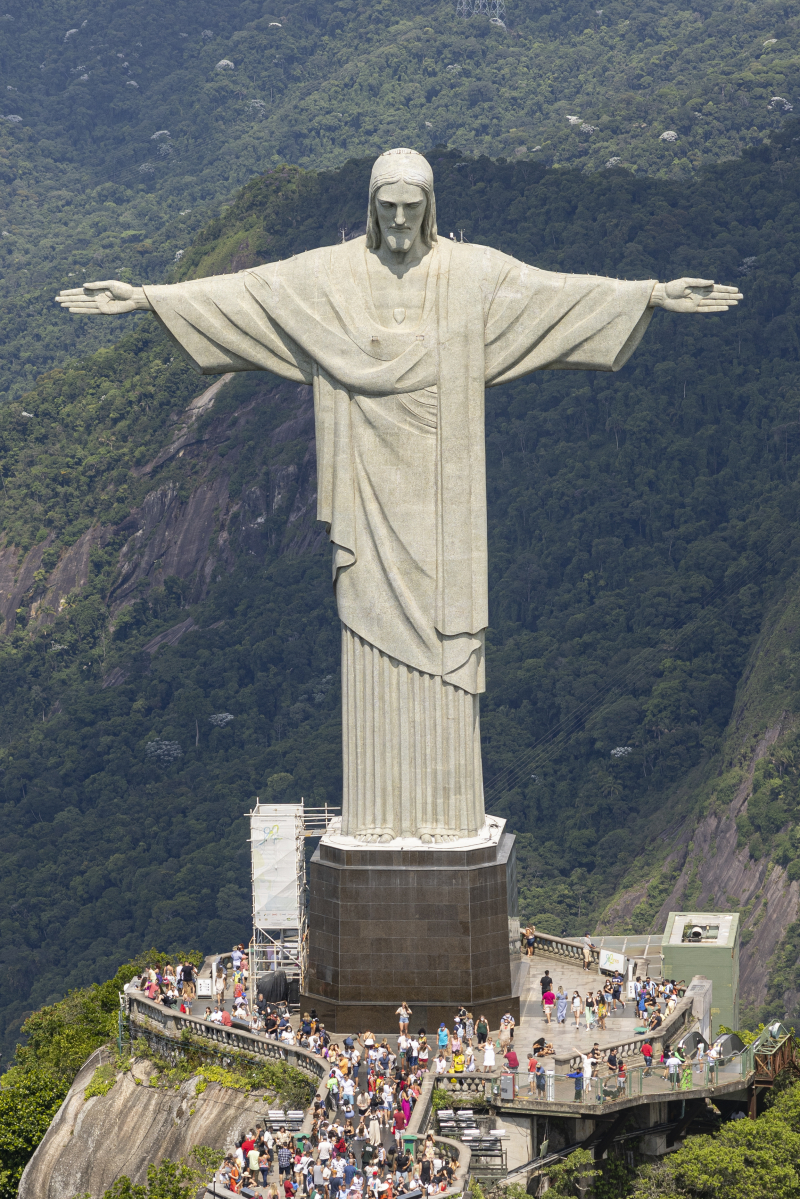
Source: wikipedia -
Porto Seguro is a beach resort town in the state of Bahia, Brazil. The famous Praia de Taperapun is one of the 90 kilometers of tropical beaches on the island. The city is also known for its active nightlife, which is centered on the Passarela do Álcool, a bar-lined promenade. During Carnival season, a big street celebration is formed by flamboyantly dressed performers and parade samba musicians. In Portuguese, Porto Seguro means "Safe Port." The Portuguese were the first to settle here around 1500. In terms of Brazilian history, this is most likely the oldest. Because the original people of Brazil did not create strong stone structures, it is difficult to discover ancient historical sites in Brazil.
Porto Seguro is stunning not just because of its architecture but also because of its magnificent beaches. If you want to enjoy a Spring Vacation-style experience, visit the city between the 12th and 15th of October, when most high schools and colleges are on break and many of them take a trip to Porto Seguro as their final excursion before graduating. The weather in Brazil is often warm all year, and this is especially true in the northern section of the nation, where Porto Seguro is located. The stunning landscapes of Arraial D'Ajuda and Trancoso, with settlements perched high on cliffs and white sand beaches below, make this a really unique destination in Brazil.
Location: the far south of Bahia, Brazil
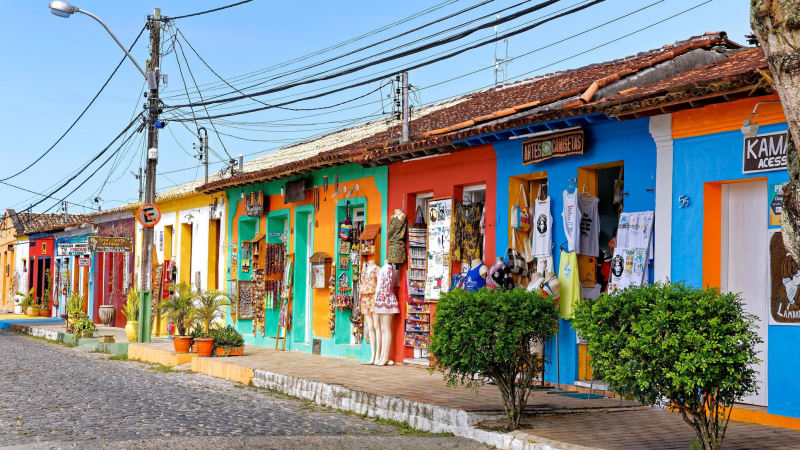
Source: planetofhotels 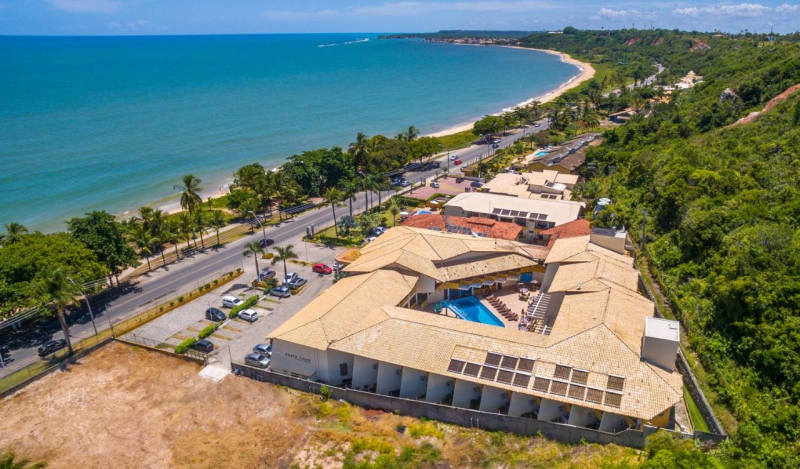
Source: booking.com





























